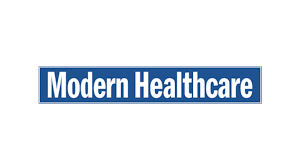Anesthesia costs squeeze ASCs as staffing shortages, reimbursement gaps widen

Editor's Note Ambulatory surgery centers (ASCs) continue to face a mounting anesthesia crisis: costs are rising, staffing is tightening, and reimbursement is failing to keep pace. Anesthesia payments have dropped 8.2% over the past decade, while provider salaries have risen by as much as 40%, creating a growing financial burden…
ASC adaptability depends on properly structured leadership

Takeaways • Different types of ASC leadership structures can be adapted to meet organizational needs. • Regulations, accreditation standards, size, and ownership types are examples of factors influencing the leadership structure. • Ongoing success of the ASC leadership team depends on factors such as governing body diversity and strategic planning.…
Proposed HHS, NIH budget cuts reveal administration priorities

Editor's Note The Trump administration’s proposed fiscal year 2026 budget calls for slashing the Department of Health and Human Services (HHS) discretionary budget by $32 billion, a nearly 25% cut that brings the total to $95 billion. Fierce Healthcare reported the news June 2. Although many of the proposed cuts…
Healthcare leaders project revenue gains from value-based care despite persistent hurdles

Editor's Note Nearly two-thirds of healthcare organizations expect increased revenue from value-based care (VBC) arrangements in 2024, signaling growing confidence in the model despite concerns over financial risk and infrastructure gaps, according to a May 19 report in Healthcare Finance. The findings are based on a nationwide survey of 168…
Hospital support staff cuts raise risk of infection, delays in care

Editor's Note Although health system layoffs so far involve mostly non-clinical staff, the cuts nonetheless threaten both hospital operations and patient safety, according to a May 21 article in Modern Healthcare. As detailed in the article, thousands of nonclinical workers—such as those working in nutrition, janitorial, and sterile processing—have been…
Session: Course Correction—Negotiating Payor Rates in the ASC Setting

Editor's Note Negotiating pay rates in the ambulatory surgery center (ASC) setting is a complex and evolving process that requires strategic planning, data-driven decision-making, and strong payer relationships, noted the speakers Amy Coletti, principal, ASC practice, and Matt Kilton, partner, at ECG Management Consultants at this year’s OR Business Management…
Solving the supply chain equation takes shared perspective, ingenuity

Takeaways • Interdepartmental collaboration and standardized communication are essential to quickly identifying and addressing supply chain challenges. • Just-in-time inventory strategies have gained traction since the pandemic. Successful strategies involve leveraging data, rethinking preference card management, and shifting to a demand-planning model. • Resiliency is essential to cope with the…
Three strategies for demystifying the ASC supply chain puzzle

Ensuring safe, quality care requires precise alignment among inventory levels, delivery schedules, storage solutions, and every other element of the supply chain. A single missing piece of this puzzle—say, a delayed shipment or a storage issue—can disrupt the entire picture. Making the pieces fit can be difficult for any healthcare…
Academic medical centers identify performance-improvement priorities

Editor's Note Amid a decline in the financial performance of academic medical centers (AMCs), McKinsey surveyed 100 of these institutions about what actions they are taking to improve, according to an April 12 report in Becker’s Hospital Review. According to the Becker’s article, the top 10 “operational levers” indicated by…
Healthcare leaders weigh supply chain impact of Baltimore bridge collapse

Editor's Note The collapse of Baltimore’s Francis Scott Key Bridge last Tuesday morning could impact the shipment of medical supplies, according to healthcare leaders quoted in a March 17 report in Chief Healthcare Executive. “Currently, any healthcare provider using a distributor in the area will likely face some impact, including…

 Free Daily News
Free Daily News